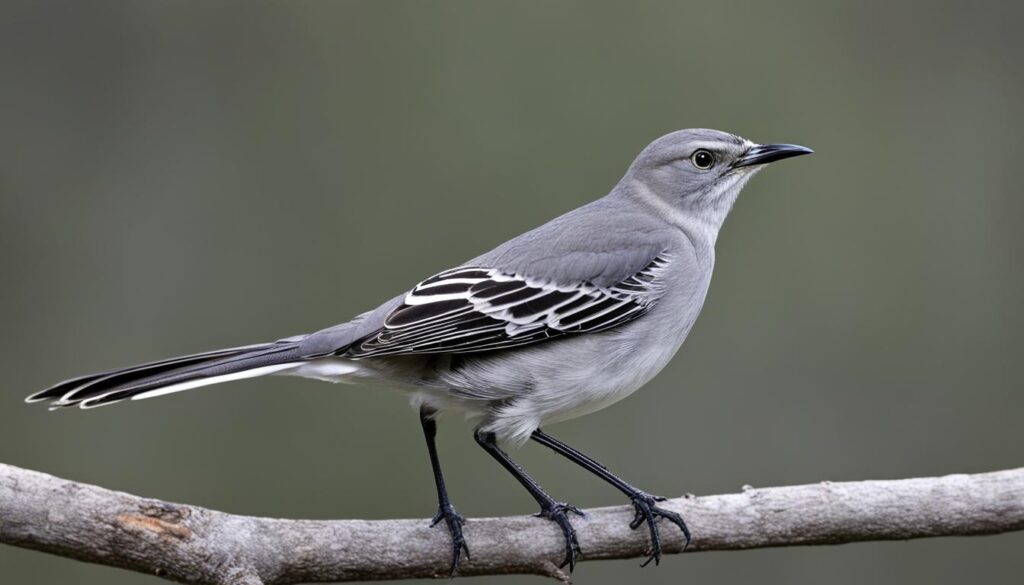As I embark on the fascinating endeavor to understand the intricacies of bird identification, I am often struck by the subtle beauty of gray and white feather identification. These colors, while seemingly modest, are pivotal cues in unveiling the mysteries of bird species with grey and white plumage. Delving into the aesthetic and functional aspects of avian feather characteristics, I recognize how these hues are not merely for show, but critically influence the behavior and survival of our feathered friends.
For both hobbyists and ornithologists, the allure of identifying a bird that boasts a sophisticated blend of gray and white in its plumage is undeniable. Whether it’s decoding behavioral patterns or adapting to diverse habitats, these colors become essential pieces in the greater puzzle of avian life. So, let us explore together the subtle nuances that make gray and white feathers a remarkable aspect of bird watching.
Key Takeaways
- Gray and white feathers serve as a critical identification tool for numerous bird species.
- Identifying birds by their plumage requires attention to detail and understanding of avian feather characteristics.
- Feather coloration can reveal much about a bird’s behavior, habitat, and even its diet.
- Different bird species can display a variety of gray and white patterns indicative of their unique ecological adaptations.
- Documenting these feather patterns contributes to our collective knowledge and aids in the preservation of bird diversity.
- Equipped with the right knowledge, anyone can engage in the rewarding practice of bird watching and identification.
The Significance of Gray and White Feathers in Bird Identification
As someone profoundly invested in bird watching essentials, I’ve come to appreciate that the importance of feather coloration extends far beyond its beauty. Gray and white feathering, while perhaps seeming mundane in contrast to brighter hues, holds profound implications for avian identification and understanding bird behavior. While out in the field, the white grey feather significance becomes clear as it often indicates a species’ unique adaptability to their environment and way of life.
In this exploration of avian marvels, it becomes evident how gray and white feathers are not merely for show; they serve critical functional roles. Camouflage, a key survival tactic, is one area where these feathers are imperative. Birds bearing these colors blend seamlessly with the skies and clouds, evading predators with ease. But there’s more to it than safety—gray and white feathers are an attraction staple during mating seasons and a visual indicator of diet and lifestyle changes.
- Camouflage: The interplay of light and shadow in a bird’s habitat is mirrored in the nuanced shades of gray and white, allowing birds like the ptarmigan to disappear against the snow or rocky outcrops.
- Mate Attraction: Certain species, such as the majestic snowy owl, boast brilliant white feathers that become a beacon of allure amongst peers during the breeding season.
- Seasonal Indicators: When observing species like the American Goldfinch, the shift into winter plumage is marked by the dulling of vibrant yellows into a soft gray pattern, signaling a change in seasons.
This nuanced visual language of feathers serves as a dynamic form of communication and identification within the bird world. As such, recognizing the intricacies within gray and white feather patterns elevates the practice of bird watching from a passive activity to a rich interpretative experience.
| Bird Species | Behavioral Significance | Habitat Connection |
|---|---|---|
| Northern Shrike | Predatory tactics enhanced by deceiving plumage | Open fields and farmland are ideal for blending |
| Clark’s Nutcracker | Social signals during foraging | Coniferous forests provide the perfect backdrop |
| Mockingbirds | Territorial displays amplified by contrasting feathers | Urban and suburban areas offer stark color contrasts |
Consistently, my experience reaffirms that the purpose and functionality of gray and white feathers are an essential piece of the puzzle for both the bird and the observer. It is these subtleties that unravel the complex tapestry of the avian world, providing invaluable insight into the lives of the birds that adorn our skies.
Exploring the Common Birds with Gray and White Feathers
The beauty and complexity of birds can often be appreciated through the subtle nuances in their plumage. In this section, we delve into the birds that don the classic gray and white feathers, allowing nature enthusiasts and birdwatchers to better identify and appreciate these avian species. From the melodious Northern Mockingbird to the elusive Gray Jay, and the charming Downy Woodpecker, each bird presents a unique set of characteristics that make them a fascinating study for both amateur and seasoned birdwatchers.
Recognizing the Northern Mockingbird
Known for its vocal prowess and ability to mimic other birds and even mechanical sounds, the Northern Mockingbird (Mimus polyglottos) is a species with a flair for performance. Part of the Mimidae family, its identification is made distinct by its grey and white plumage, with darker grey colors dominating the upper parts and a lighter shade on its belly. Observing their behavior is also key to identification; they’re territorial yet expressive, often seen perched atop high vantage points.
The Distinctive Gray Jay
Next on our birdwatching journey is the Gray Jay, or Perisoreus canadensis. Found primarily in the boreal forests of North America, these grey and white feathered birds are a testament to adaptability. Their muted plumage provides excellent camouflage against the lichen-covered trees they inhabit. Birdwatchers should keep an eye out for their bold and curious nature, as Gray Jays are known to approach humans, making Gray Jay birdwatching a remarkably interactive experience.
Distinguishing the Downy Woodpecker
When it comes to identifying the petit and active Downy Woodpecker (Picoides pubescens), one must note the striking contrast in its feather pattern. The bird’s black wings, punctuated with white spots, create a dramatic backdrop for its white underparts. Wing beats are short, and their movements are agile, encapsulating the dynamic Downy Woodpecker characteristics. Seekers of these birds will be rewarded with sightings of them pecking away at tree barks in a quest for insects.

By paying attention to these details, birdwatchers can gain an appreciation for the diversity and beauty that gray and white plumage brings to the avian world. Understanding the unique traits of the Northern Mockingbird, the Gray Jay, and the Downy Woodpecker provides an enriching backdrop to the birdwatching experience. It’s these subtle distinctions that make birdwatching a continually engaging and educational hobby.
Regional Variations of Gray and White Feather Patterns
As I delve into the study of regional bird species and American avian diversity, it becomes increasingly clear that the variation in feather pattern variation is as vast as the landscapes these birds inhabit. These patterns are more than mere aesthetic differences; they’re the result of a fascinating interplay between genetics and the environment, a perfect illustration of environmental adaptation in birds.
Gray and White Feather Varieties Across America
In my exploration of the United States’ diverse bird populations, the nuances in feather coloration and habitat are pronounced. From the shades of gray on a Mockingbird in the humid South to the crisp white and gray contrasts of a Junco in the northern snow, the impact is undeniable. Such feather pattern variation echoes the adaptive strategies these marvelous creatures deploy in response to regional climates and ecological pressures.
How Habitat Influences Feather Patterns
The imprint of the habitat on plumage is profound. Urban-dwelling birds, for instance, may develop feathers that blend into the concrete jungle, whereas their country cousins often sport patterns that meld into the wild, verdant landscapes. It’s this habitat impact on plumage that often puzzles and fascinates us, as we witness firsthand how birds optimize their appearance for survival and success within their chosen environment.
Identifying Migratory Birds by Feather Coloration
My attention often shifts to  bird species that grace us with their presence seasonally. Key insights into feather identification during migration reveal much about where these birds have been, where they’re going, and the environmental challenges they face. By understanding their gray and white feather migration patterns, we not only enrich our knowledge but also contribute to their conservation as they navigate the globe.
bird species that grace us with their presence seasonally. Key insights into feather identification during migration reveal much about where these birds have been, where they’re going, and the environmental challenges they face. By understanding their gray and white feather migration patterns, we not only enrich our knowledge but also contribute to their conservation as they navigate the globe.
Tips for Amateur Ornithologists: Documenting Gray and White Feather Sightings
For those of you seeking to sharpen your avian observation skills, documenting your discoveries is a vital practice. I’ve gathered some bird logging practices that are instrumental for any novice ornithologist aiming to keep an accurate record of the gray and white feathered birds they encounter. The process not only enhances the bird-watching experience but also paves the way for contributions to citizen science.
Commencing with photography, it’s crucial to capture clear shots of each bird’s unique gray and white plumage. Use a camera that affords a good zoom function and a quick shutter speed to freeze those fleeting moments. When documenting grey and white feathers, lighting is your ally – it can accentuate the subtle distinctions in coloration that are key in species identification. Next, I find that keeping a dedicated notebook or digital log for detailed note-taking immensely helpful. Record the time, location, behavior, and any standout features observed. This precision is particularly invaluable when you later reference field guides or apps to cross-check and verify sightings.
Speaking of technology, employing bird watching apps can streamline the identification process and provide a platform for logging your observations systematically. Apps such as eBird or iNaturalist offer a community-based approach to documenting and learning, and they hold a treasure trove of data that fosters global bird monitoring efforts. Lastly, don’t forget to regularly consult well-regarded field guides; these resources can significantly deepen your understanding of species particulars and identification techniques. Together, these methods are fundamental to documenting grey and white feather observations, aiding your growth in the richly rewarding field of ornithology.